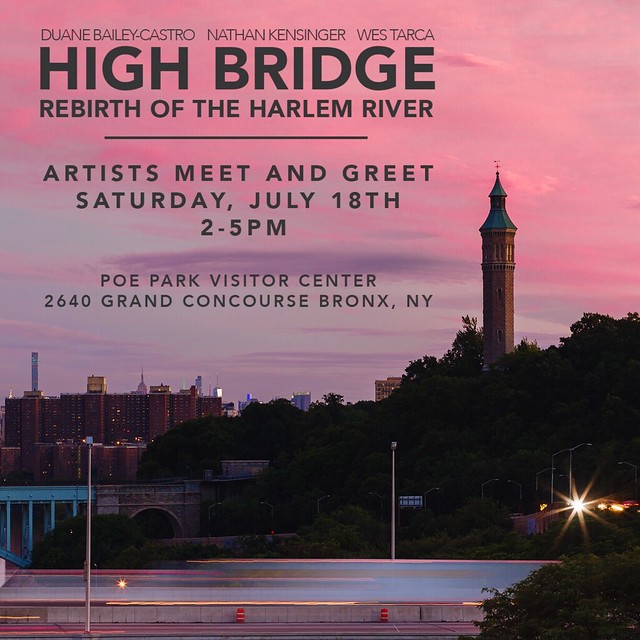The Andrew Freedman Home
January 30, 2013 -
Once a retirement mansion for destitute millionaires, The Andrew Freedman Home is now a house divided. On the ground floor, it presents a restored version of its luxurious past, with a bed and breakfast that includes well appointed bedrooms, spacious ballrooms, an elegant saloon and a grand library. On upper floors, the home is a playground for pigeons that pick through the muck left behind by decades of decay. Though situated on the Grand Concourse, one of the busiest streets in the Bronx, this semi-abandoned New York City Landmark feels more like an urban version of The Overlook Hotel.
Built in 1924, The Andrew Freedman Home "was designed in the Italian Renaissance style," according to a denied Landmark designation request from 1974 (PDF), and is "an imposing limestone structure occupying an entire block facing the Grand Concourse." It was funded by a five million dollar bequest from Andrew Freedman, the "Father of the New York Subway" and a one-time owner of the New York Giants baseball team, whose dying wish in 1915 was to create a home for "aged and indigent gentlefolk... of culture and refinement."
"In short, it was built for indigent capitalists," wrote Vivian Gornick in "A Splendid and Bitter Isolation," a 1980 article for the Village Voice. "It broke Andrew Freedman's heart to think that men who had once held Wall Street in thrall were wandering around broke, not being listened to any more. More than that: it terrified him." In order to house these sad compatriots, Freedman's bequest was used to create "a large beautiful structure whose interior strongly resembled a great 19th century hotel: carpeted lounges, all velvet wing chairs, marble fireplaces, great arched windows, an oak paneled library, chandeliered dining rooms, bedrooms complete with soft lamps, thick rugs, crisp linen. At dinner, black ties and long dresses, silver service, white-gloved waiters. And no one paid a cent."
Oak Paneled Library
Carpeted Hallway
Furnished Bedroom
In later years, The Andrew Freedman Home's mission would expand to embrace aged intellectuals, including professors, political scientists, painters, and university librarians. By 1983, however, "the increasing cost of maintaining the facility forced the home to close," according to a successful Landmark designation report from 1992 (PDF), and "the building was purchased by the Mid-Bronx Senior Citizens Council as housing for the elderly." The few remaining wealthy residents from the building's past were relocated, to be replaced with a more economically diverse set of retirees. The Council, which still owns the building today, used the ground floor level for a retirement home, daycare and event space, but "much of the rest of the vast building has been kept sealed off like a tomb, a time-capsule monument to the Bronx’s grand past," according to the New York Times.
In 2012, sections of the home's first and second floors were opened to the public for the first time during a unique installation by No Longer Empty titled "This Side of Paradise." The exhibit ran from April until June, and encouraged artists to incorporate artifacts left behind from the building's decaying past - typewriters, pianos, hair dryers - to connect "the history of the home with the present day realities of the Bronx." Rooms on the first and second floors were given over to a variety of individuals, including graffiti artists, sculptors, and a posthumous installation of work by war photographer Tim Hetherington. A number of the sealed, abandoned rooms on the second floor were reclaimed and transformed into bright, colorful spaces.
"This Side of Paradise (I Lost All My Money in the
Great Depression and All I Got Was This Room)"
(2012) - Adam Parker Smith
Great Depression and All I Got Was This Room)"
(2012) - Adam Parker Smith
"Furthur" (2012) - DAZE
The upper levels of The Andrew Freedman Home, however, remained virulently derelict. On the third and fourth floors, broken windows let in rain and snow, causing paint to peel and ceilings to collapse. Piles of pigeon droppings grew on many surfaces. Evidence of squatters filled empty rooms, including pornographic magazines and VHS tapes. Other rooms were taken over by unsanctioned graffiti. One was carpeted in dead Christmas trees. These sections of the building were essentially an uncontrolled ruin, albeit one with delicate curtains still hanging on windows and barber chairs waiting for customers. A visiting artist who spent a night at the home in early 2012 was handed "a two-foot-long machete," according to the New York Times, in case she "came across anyone who broke in during the night."
In December 2012, the first floor of this divided home was once again opened to the public. This time, it was offered up as a bed and breakfast named Freedman on the Concourse, a "charming ten room guest house" located "just 20 minutes from New York's Times Square," according to the Mid-Bronx Senior Citizens Council. At their "delightful, 1920s themed lodging facility," overnight guests can drink in a "vintage speakeasy lounge," run and hide "on our expansive lawns," and sleep on furniture reclaimed from the bedrooms of original residents. Rates start at $175. Rooms are still available for Valentines Day.
---
For other photo essays about art installations that engage historic, damaged New York City spaces, view essays from The Newtown Creek Armada (2012), The Boatel (2011), House of Cards (2010), This Building has a Story (2010) and The Encampment (2007). No Longer Empty currently has an exhibit titled How Much Do I Owe You on view at an abandoned bank building in Long Island City.
Second Floor Hallway
Christmas Storage
Barber Shop
Doctor's Office
Third Floor Hallway
Empty Bedroom
Left Behind
Squatter's Collection
Plastic Wrapped Bedroom
Lace Curtains
Broken Frame























